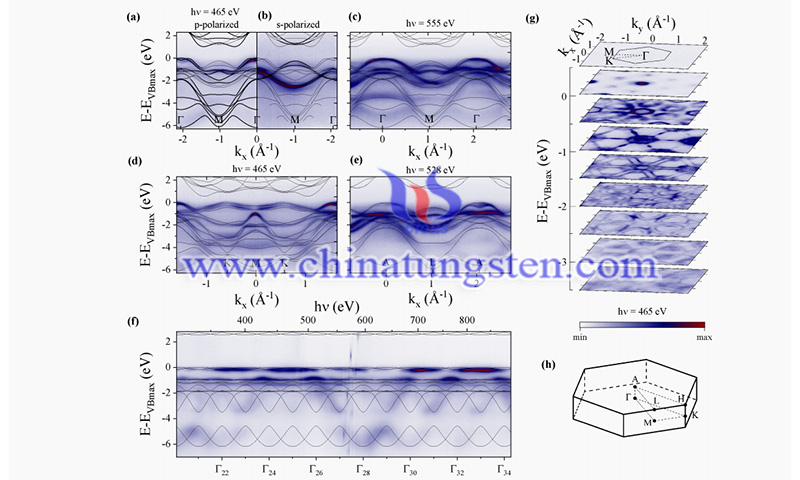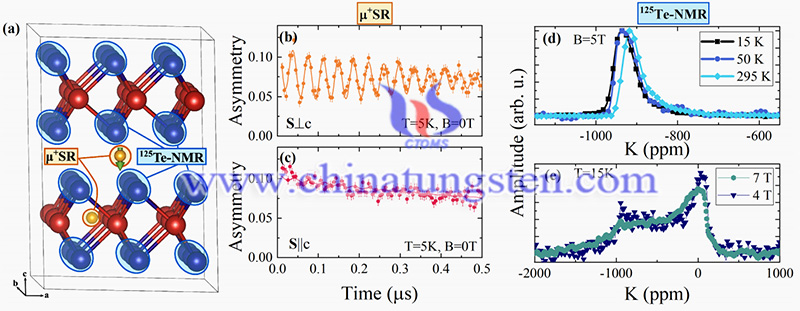Hydrogen-Impurity Induced Magnetism in Molybdenum Ditelluride
- Details
- Category: Tungsten Information
- Published on Monday, 13 June 2022 23:59
A recent study demonstrates hydrogen-impurity induced magnetism in molybdenum ditelluride (MoTe2). Layered transition-metal dichalcogenides (TMDs) are a promising class of materials with optoelectronic, superconducting, catalytic, and topological properties. In TMDs, the polymorphic MoTe2 exhibits various electronic and magnetic properties. Its metallic 1T' phase turns into a Td phase at ≈250 K. The latter is a topological Weyl semimetal with unconventional superconductivity at low temperatures.

(Credit: Jonas A. Krieger/Paul Scherrer Institute)
Hydrogen-impurity - 2H-phase is the most stable phase under ambient conditions and is an indirect bandgap semiconductor that has been successfully integrated into transistors and photodetectors. 2H -MoTe2 was shown to be a magnetic semiconductor that exhibits a long-range magnetic order in the bulk at low temperatures, which was tentatively attributed to a Mo anti-site defect. However, no other technique has reported this long-range magnetic order and the origin of this magnetism remains unclear.
In fact, theoretical calculations also predict that hydrogen and transition metal dopants are able to induce spin polarization of molybdenum ditelluride in the monolayer limit, in addition to the anti-site defect. Since the muon can be considered as a light hydrogen isotope, a possible explanation is that the magnetic properties observed in µ+SR are not intrinsic, but induced by the muon itself.
This study shows that the hydrogen-induced magnetic state remains constant at the crystal surface, thus establishing 2H -MoTe2 as a magnetic semiconductor that can be switched by hydrogen doping, thus paving the way for the integration of TMD into future applications in thin-film heterostructures.

(Credit: Jonas A. Krieger/Paul Scherrer Institute)
This study shows that the hydrogen-induced magnetic state remains constant at the crystal surface, thus establishing 2H -MoTe2 as a magnetic semiconductor that can be switched by hydrogen doping, thus paving the way for the integration of TMD into future applications in thin-film heterostructures.
In conclusion, the use of local magnetic probe measurements, ARPES, and theoretical DFT calculations reveal that 2H -MoTe2 is a semiconductor on the verge of magnetism. A comparison of the intrinsic 125Te-NMR probe with the implanted mu electron spin probe confirms that the local field observed in µ+SR does not reflect the intrinsic long-range magnetic order. Instead, as an isolated impurity similar to hydrogen, muonium (an isotope of hydrogen) can be used to "switch-on" the local magnetic moment in this system.
The study titled “Hydrogen-impurity induced unconventional magnetism in semiconducting molybdenum ditelluride” has been published pre-online (2022). The study was carried out by Jonas A. Krieger, Daniel Tay, Igor P. Rusinov, Sourabh Barua, et al. This study found that the effect of muonium on local magnetism remains unchanged up to the surface of the crystal, which paves the way for the conversion of 2H -MoTe2 into vdW heterostructured magnetic semiconductor building blocks using hydrogen impurities.
| Molybdenum Supplier: Chinatungsten Online www.molybdenum.com.cn | Tel.: 86 592 5129696; Fax: 86 592 5129797;Email:sales@chinatungsten.com |
| Tungsten News & Prices, 3G Version: http://3g.chinatungsten.com | Molybdenum News & Molybdenum Price: http://news.molybdenum.com.cn |



 sales@chinatungsten.com
sales@chinatungsten.com